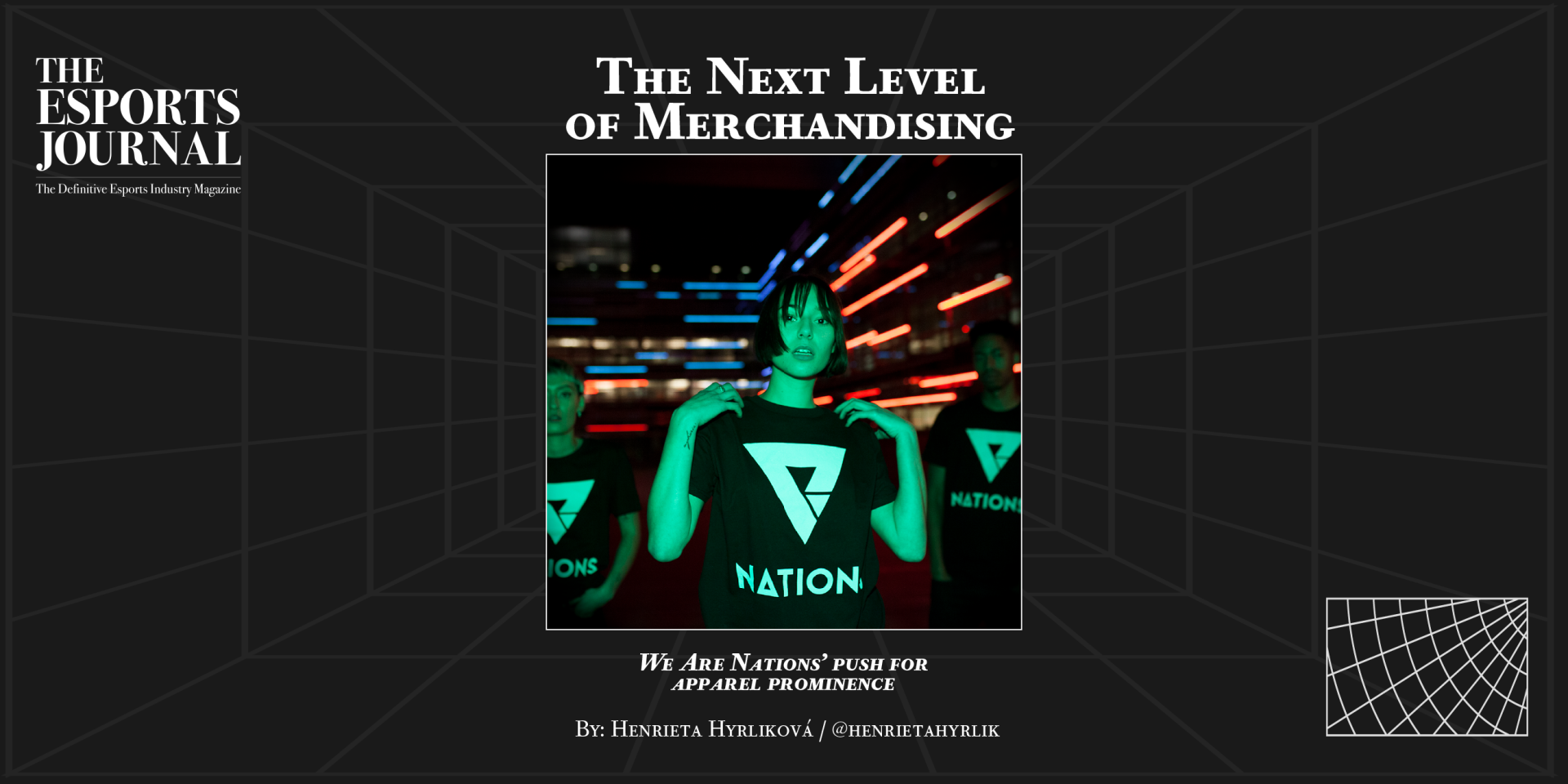
In esports, the term ‘merchandise’ or ‘merch’ refers most commonly to branded clothing. Widely exceeding team jerseys in variety, esports apparel can be an excellent revenue earner and has become an essential part of many organisations’ business models.
In the current market, the same applies for amateur orgs and content creators. Nearly everybody with a name in esports and gaming has their own merch collection these days. However, there’s more to merchandise than just revenue.
Double revenue potential
“It has an enormous amount of marketing potential as well,” Alex Romer, CEO of We Are Nations, told The Esports Journal. Merch is a product that people physically wear and those around them can see. So, where there’s marketing potential, there’s revenue potential too.
The key to a successful merchandise programme is getting the product into mainstream retail. There’s just one catch: the retailer takes a margin, thus lower per-unit profit returns. However, according to Romer, lower merchandise returns can ultimately result in higher revenue due to the sheer volume that can be sold through retailers.
“If you have merchandise in retail because it’s affordable enough for retailers to buy, then you’re getting exposure for your sponsors. Consequently, they’re more likely to engage and pay more,” he said. But the potential doesn’t stop there.
“What a lot of people forget is that merchandise is also probably the best engagement tool, in both sports and esports,” said Romer. With more fans getting engaged through merch, there’s more opportunities for companies to sell their other products and services of monetary value.
He continued: “It really depends on how you view the commercial world and how you want to use all the tools it offers. Finding the right combination between sponsorship, merchandise, and other commercially-driven campaigns is likely to generate a more sustainable overall revenue. It’s all bits of a jigsaw and you need to decide which bits work well for you.”
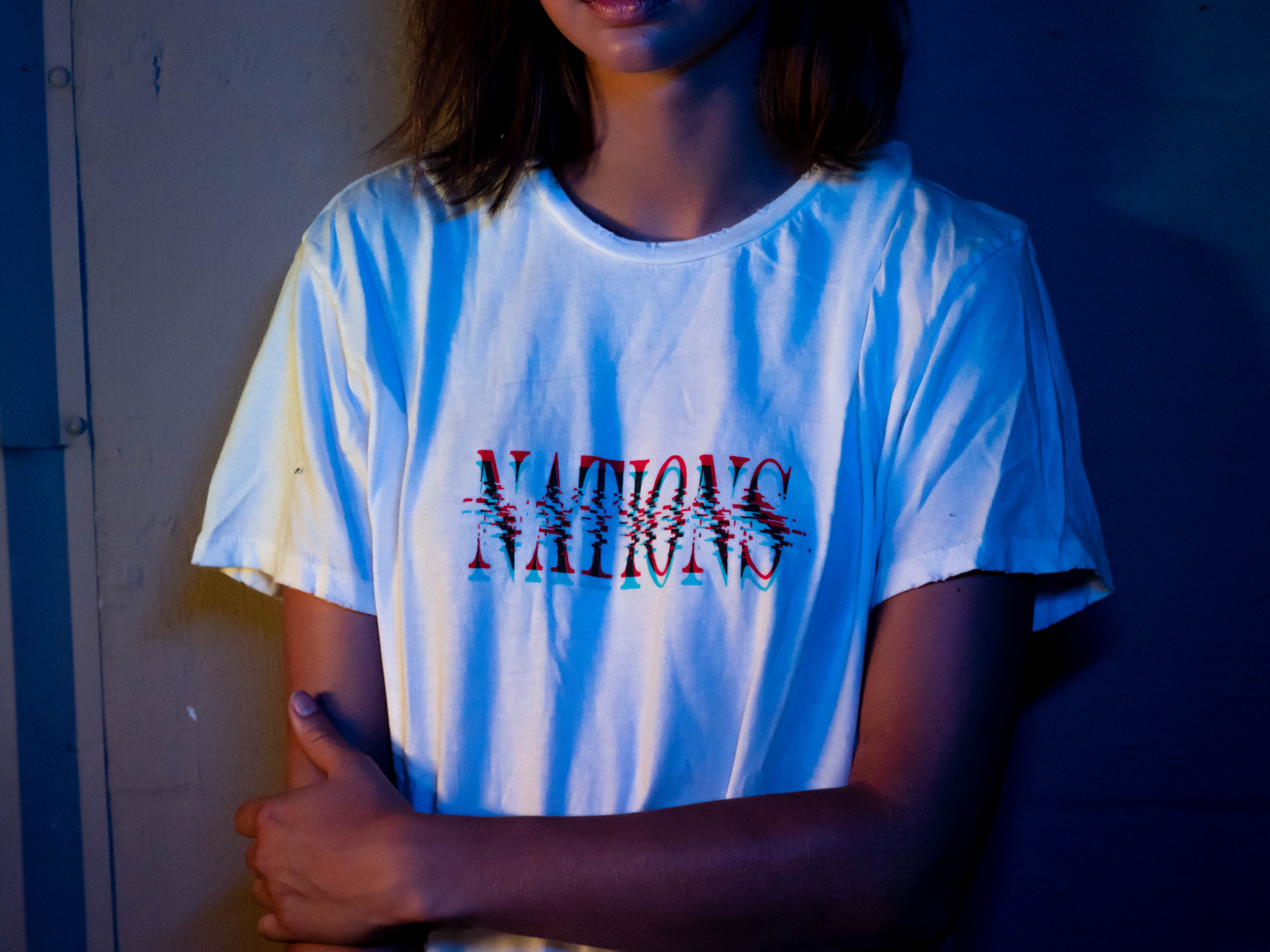
The Immortals deal
Showcasing how all this can work in practice, We Are Nations has partnered with North American esports organisation Immortals to introduce a new ‘zero profit pricing’ line of branded apparel.
With prices no higher than $40 (£28.83), the Immortals Essentials collection features a minimalist style, unisex line of t-shirts, hoodies, and hats. The org’s new merchandising programme is supposedly characterised by lower prices, enhanced product quality, free shipping, and taking zero profits.
It may sound altruistic, but there’s a calculated marketing principle behind it. “As a long-standing partner of Nations, [Immortals] is someone we’re looking to make a difference with. This is an opportunity to challenge the pure money-making side of merchandising and balance it out with getting it into the hands of as many fans as possible in the hope that they will not only engage with the product, but importantly, with the brand,” explained Romer.
According to Romer, the number of people who become fans of a team because they bought their first piece of merchandise is higher than people recognise — that’s the main strategy behind the zero profit pricing programme.
“Our hope and our plan is to increase engagement by making merchandise affordable for those people who might not even know about Immortals,” he said. Essentially, a quality piece of clothing for a good price is what should make people decide to buy the product. If they like the piece, they might ultimately become fans.
That said, Romer doesn’t have a universal answer on how to find an equilibrium between increasing engagement and profit: “It’s an odd one to articulate. It’s balancing out the marketing side of the merchandising sector. It’s about the balance between doing your best to get your product into fan’s hands and making profit.”
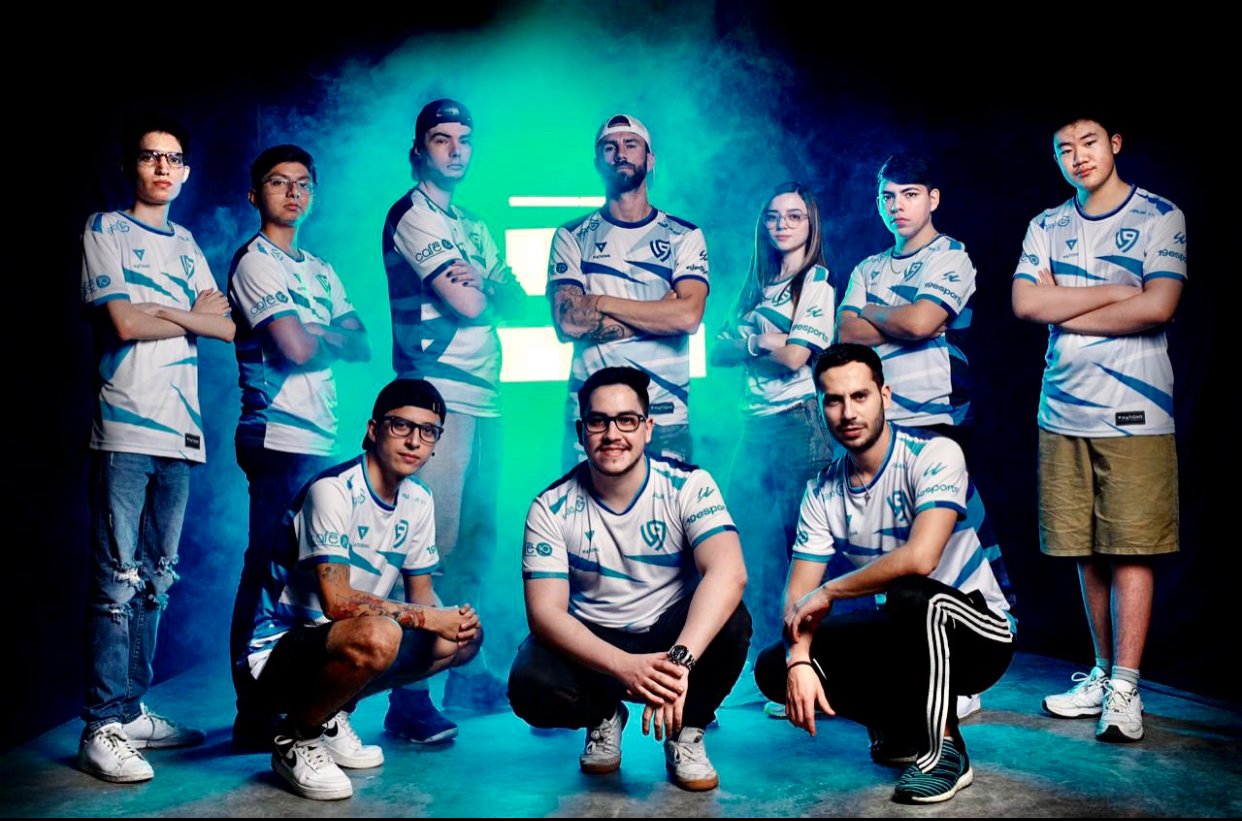
RELATED: Data expansion unlocked: The GRID Open Platform and what it means for esports
Becoming a destionation retailer
When it comes to getting goods into the hands of fans, We Are Nations has put a great deal of effort and resources into optimising the process, resulting in a ‘destination retail store’ for gaming and esports communities.
Romer explained the thought process behind this new concept in esports merchandising: “A lot of merchandise is bought through individual team or publisher stores, but we believe there is an opportunity in a universal online store that offers numerous esports and gaming products in one place.
“A lot of fans may not actually support a team, or they may support more than one team. For them, it can be incredibly convenient to have a site where they can choose from many brands and different types of products. It is a big opportunity not only for ourselves, but also for the community.”
As such, WeAreNations.com relaunched in September with multiple experiential and engagement areas, including LAN+: a loyalty programme which allows fans to join and give their opinion on what the company is doing, as well as be among the first to buy newly introduced products and earn prizes or even tickets to events.
Besides the traditional teamwear products featuring the likes of Complexity, G2 Esports or Heroic; the store also offers influencer drops and the company’s own collection, Nations Apparel. Moreover, visitors can watch live esports broadcasts from the site, with more content to be added in the future.
With such a broad offering, the results showed shortly after the platform’s launch. “We’ve seen an enormous increase in both visitors and sales,” said Romer. “The engagement into LAN+ programme was far greater than we expected. It’s proof that it provides a good platform for new things we plan in 2022.”
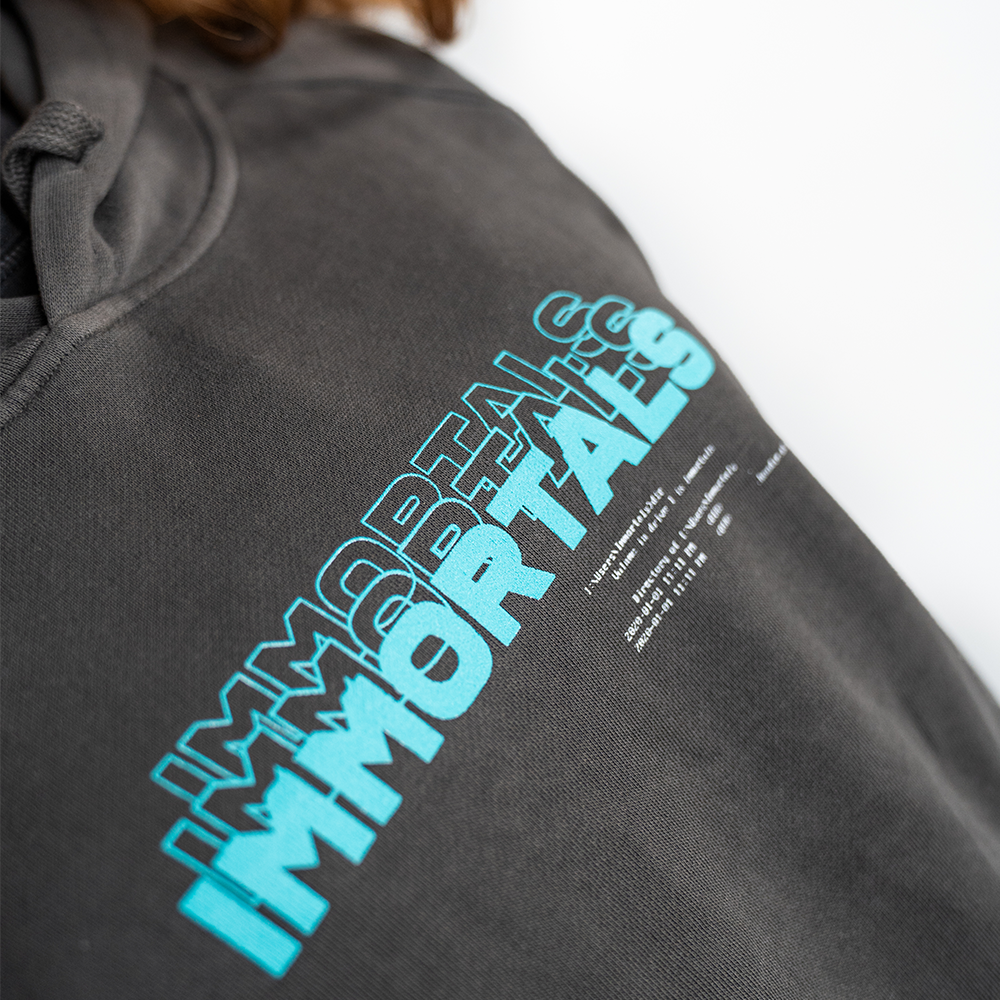
Working with Valve
Having secured a multi-year deal with game publisher Valve to deliver a full range of merchandise for Dota 2’s The International 2021 championship, the Nations store shipped the special merch to 83 countries.
It was the uniqueness and novelty of the collection that contributed to the increased demand. “Usually, event merchandise can be relatively simple, but with Valve, we were looking for a premium and crafted product lineup,” said Romer.
In his words, the highlight of the collection — the TI Tracksuit Jacket — was one of the best products the company has ever created. Accordingly, the raven black suit with The International pattern and gold embellishments was a hit in terms of sales.
“There’s a certain amount of business volume that’s needed for us to be able to make that kind of product. With TI and Valve, we had the opportunity, which we took,” he said.
“Working with Valve was fantastic because they challenged us to develop new products, not only for the event, but also fanart products. We’ve always believed that we could work with talented artists out there and put their art on our product. It worked extremely well and we will look to do it again in the future.”
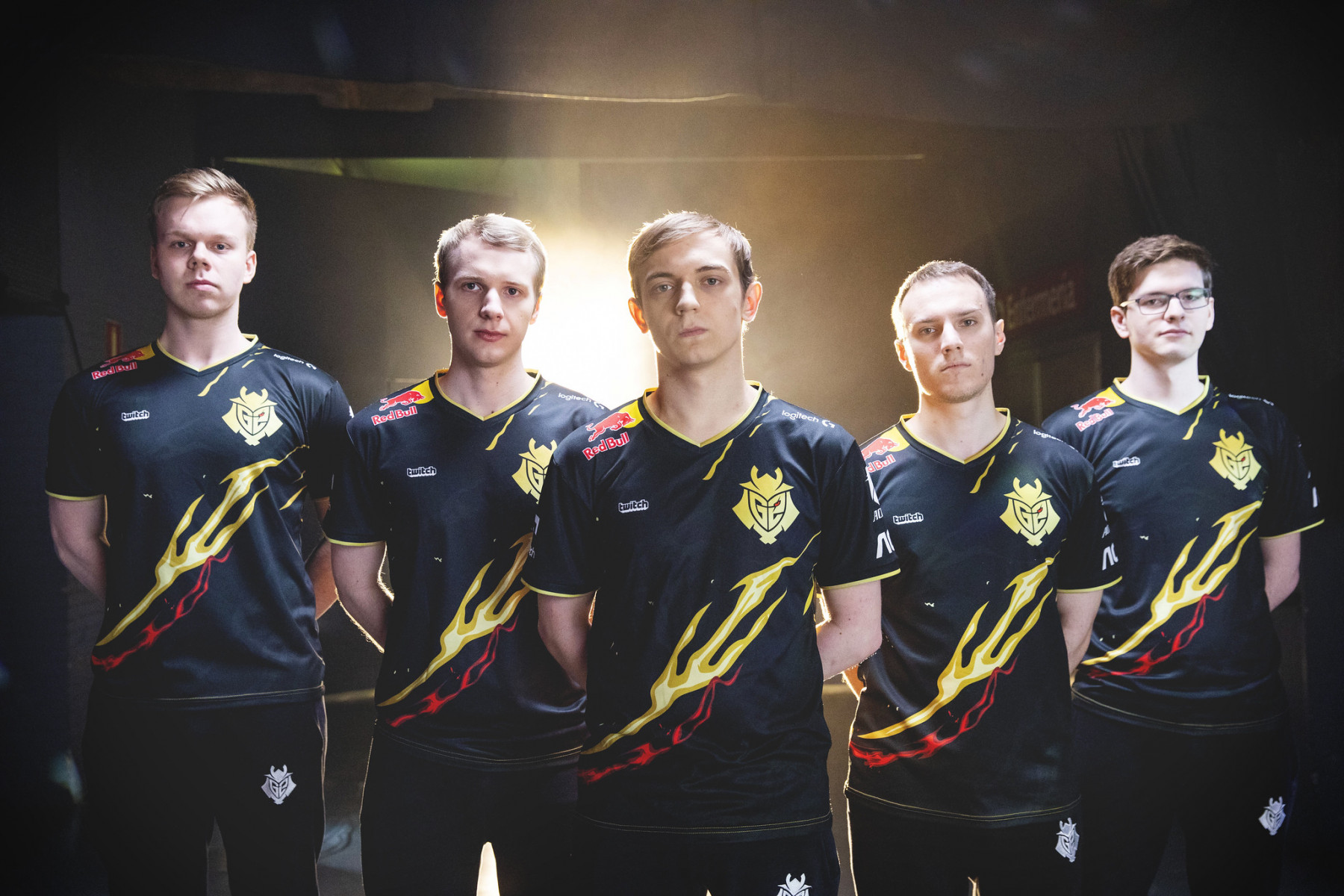
Environmentally conscious
As a part of upgrading its esports merchandising business, Nations remembers the importance of upgrading its manufacturing processes and products towards environmental sustainability. However, such a task is not always as easy as fashion companies might present it.
“The major challenges in shifting to purely environmentally conscious production are availability and quality of particular recycled materials,” explained Romer. “Even the big players like Nike and Adidas recognize that they can’t necessarily make everything sustainable out of recycled materials, because there may not be quality materials available to do that.”
Rather than promising the unachievable, the company is making changes bit by bit, with the first pieces from recycled fabric currently in development. “This change is very important to us and it will happen rather gradually,” he said.
“The last thing I want to do as a brand is to say that we are sustainable and environmentally friendly and then not be able to deliver on that promise. That would be letting the brand and the customers down. And I am not prepared to do that.”
RELATED: The little Esports Island that could
What’s next
Stepping into 2022, Romer sees more opportunities for esports merchandising in the comeback of esports to the physical world: “I think the key learning coming out of the past two years is that we underestimated how important live events are to this industry.
“We’re seen by outsiders as a purely online environment, but having fans coming to events and bringing in their enthusiasm is essential to its growth. I’m hoping for more investments and more focus on live events, moving into 2022 and beyond.”
The other thing that was put on hold by the pandemic was Nations’ engagement with traditional brick-and-mortar and online retailers, particularly in Europe. The company will soon be launching its offering on multinational ecommerce fashion platform Zalando and is planning to roll out to more retailers throughout 2022.
Moreover, Nations is also working on setting up an online store for Brazil to complement Nations Mexico that was launched in 2021.
Finally, We Are Nations intends to expand its business into China in pursuit of becoming a ‘truly global brand’. “To test the waters,’ Romers said, “we launched products and official shops to prominent Chinese teams FPX and Invictus, which went down very well. It also showed us that esports is truly global.” Working with these organisations outside China, Nations aims to provide them with positive brand recognition to expand into China itself.
Nations seems to have it all figured out as it moves forward with its ‘next level merchandising’ — its inventive approach to esports apparel focused around efficient use of marketing tools, engagement, and fan loyalty — while maintaining fair prices and commitment to the community.
Whilst it remains to be determined whether this approach is universally employable, it appears to be working well for the company and its partnered organisations, potentially setting a new standard for the esports merchandising sector.
This article first appeared in The Esports Journal Edition 10 (page 16). Read the rest of Edition 10 for free using the embed below, or at theesportsjournal.news

